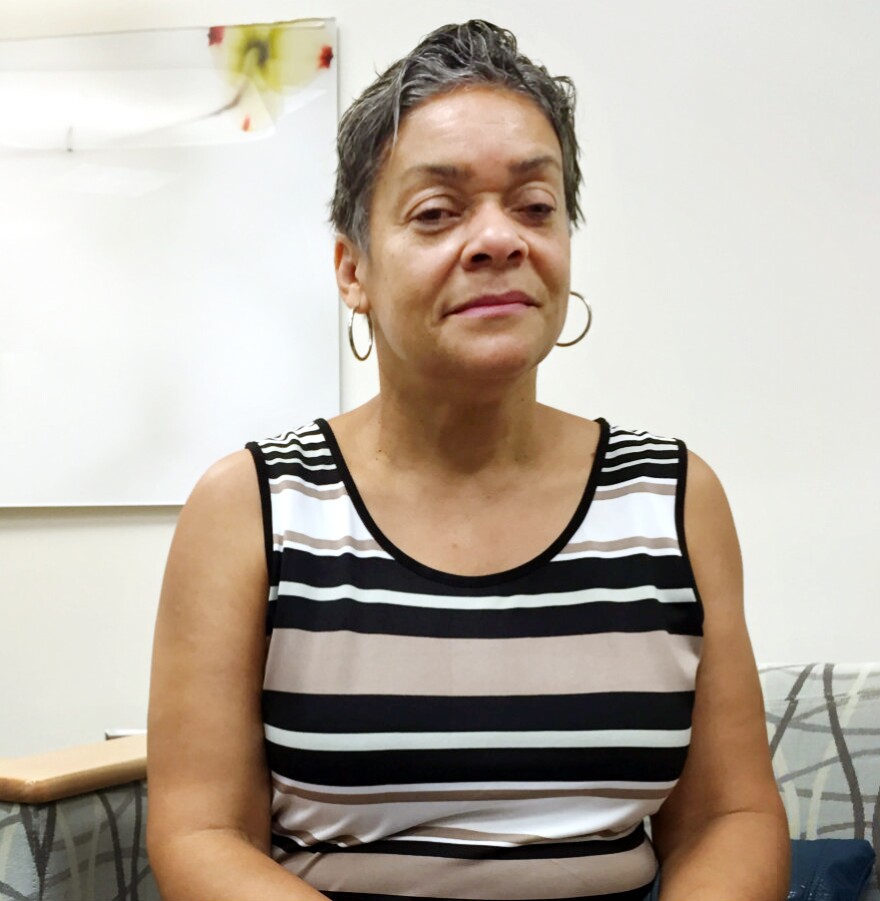A key goal of the Affordable Care Act is to help people get health insurance who may have not been able to pay for it before. But the most popular plans – those with low monthly premiums – also have high deductibles and copays. And that can leave medical care still out of reach for some.
Renee Mitchell of Stone Mountain, Georgia is one of those people. She previously put off a medical procedure because of the expense. But as the threat of losing part of her vision became a real possibility, she sought an eye specialist at Emory University, who told her she'd need surgery to correct a cataract procedure gone wrong.
That's not the scariest part, she says. Cost is: "further copays [and] more out-of-pocket expenses."
Mitchell is generally pleased with her insurance — a silver-level Obamacare plan. It's the most popular level plan with consumers because of the benefits it provides for the money. But she still struggles to keep up with her part of the bills.
"One in four adults who were fully insured for the whole year still reported they went without some needed medical care because they couldn't afford it."
"If not for having availability on my credit card, we'd probably be in the poorhouse," Mitchell says.
She still owes more than $20,000 for several years of medical expenses, with more debt accruing in interest each month. If she undergoes that eye surgery, she says, she'll owe another $4,000 – the deductible for the operation.
"It's a very big burden," Mitchell says.
A recent study released by the nonprofit Families USA shows that a lot of folks with coverage like Mitchell's feel a similar burden, and a poll from the Kaiser Family Foundation finds the same thing. The majority of people who buy insurance on state or federal exchanges pick silver-level plans, which often carry a lower monthly premium, but have a high annual deductible – $1,500 or more.
"Consumers are still struggling with unaffordable, out-of-pocket costs," says Lydia Mitts, a senior policy analyst with Families USA. "One in four adults who were fully insured for the whole year still reported they went without some needed medical care because they couldn't afford it," Mitts says.
Many people in that situation skip follow-up care and don't fill prescriptions. Mitts says that only adds to long-term complications and costs.
But it doesn't have to be that way, she says. Plans in some states, including Pennsylvania, Texas, Florida and Arizona, have recently done away with deductibles on some silver-level insurance plans. And for certain basic services, including doctors' visits and generic prescriptions, other states are requiring only a small copay.
Still, while copays, deductibles and co-insurance weigh heavy on Renee Mitchell's mind, they're not her only insurance concern. Her monthly premium is also getting more expensive. This year, she says, it jumped by about $100 a month.
Mitchell wants to be clear, though: She's not looking for a handout.
"People seem to think that we just want something for nothing," she says. "I worked a lot of years. I took an early retirement to take care of my family. It's not my fault, so to speak, that I'm here."
This story is part of NPR's reporting partnership with WABE andKaiser Health News.
Copyright 2021 WABE 90.1. To see more, visit WABE 90.1. 9(MDIwNjQ2MTYzMDE0NDM1NTQ0OThlYjEzMg001))







